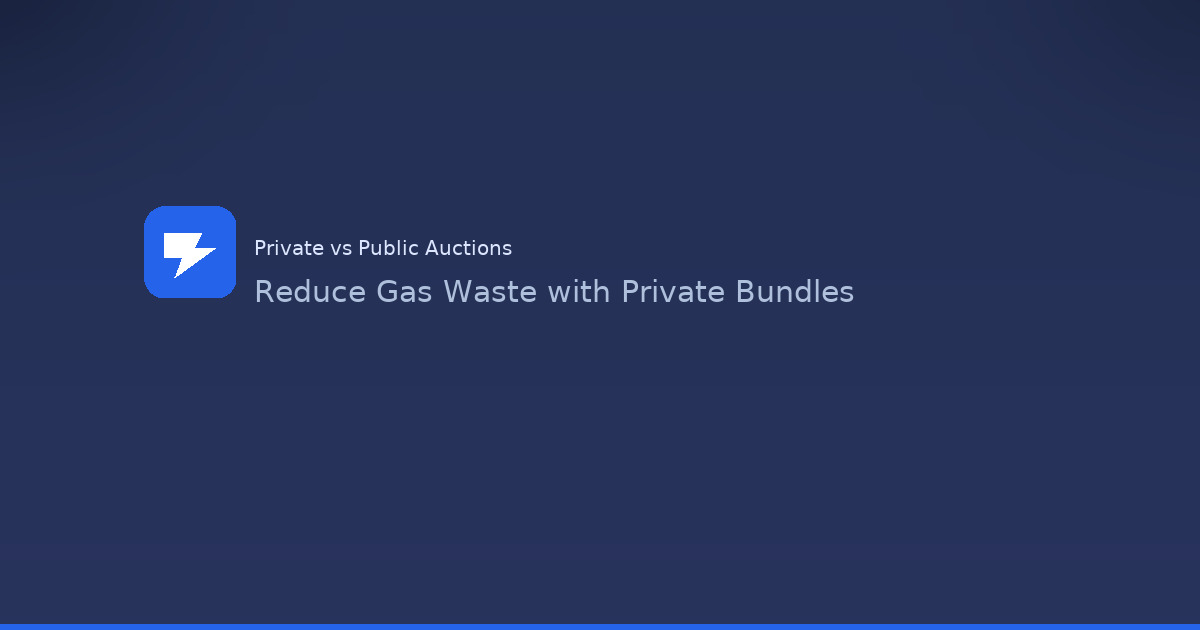Reducing Gas Waste: Private Bundles vs Public Auctions
Gas optimization for MEV: when private bundles save gas vs public PGAs, how to set budgets and retry logic, and examples that show more cost‑effective and reliable execution.
Outcome
Ship a safer gas waste route
Updated
8/22/2025
Next step
Launch dashboard & assign node

Overview
When private bundles save gas vs public auctions, with examples.
TL;DR
- Private bundles can save gas by avoiding bidding wars.
- Public PGAs okay with strict caps and fallback logic.
- Measure inclusion vs cost.
Key points
- Clear definitions and when this topic matters for MEV practitioners.
- Step-by-step guidance you can apply inside FRB today.
- Risk notes and guardrails (no profitability guarantees).
Walkthrough
- Setup — ensure reliable RPC/WSS endpoints and time-sync.
- Configuration — start with simulation/canary, set slippage and budget caps.
- Execution — prefer private bundles when available; monitor inclusion and adjust.
- Review — log outcomes, tweak filters, and iterate conservatively.
Example
- Compare inclusion/cost for a given strategy across private vs public over 100 attempts.
Checklist
- [ ] Fallback to public PGA only when private relay unavailable
- [ ] Gas caps set
- [ ] Inclusion % monitored
Risk & compliance
MEV is experimental and high-risk. Slippage, inclusion uncertainty and reorgs can cause losses. You are responsible for legality in your jurisdiction.
Next steps
Use the FRB agent to scan mempools and submit private bundles with custody preserved.
→ Try FRB or watch the 2‑min demo on the homepage.
Step after reading
Launch FRB dashboard
Connect your wallet, pair the node client with a 6-character PIN, and assign the contract mentioned above.
Need the signed build?
Download & verify FRB
Grab the latest installer, compare SHA‑256 to Releases, then follow the Safe start checklist.
Check Releases & SHA‑256Related
Further reading & tools
Comments
Please cover bundle failure modes and retries.
Great primer on private bundles and risks.
Latency figures would be nice to benchmark against.
Any tips for tuning slippage caps on volatile pairs?
Could you compare relay options in more detail?
The checklist was super helpful—please add a section on reorgs.
I set tighter caps and avoided a big loss—thanks!
Hope to see more examples on Polygon.
Clear and concise—thanks for the safety notes!
I tried this with a canary size and it worked as expected.
Backrun example clarified a lot for me.
Inclusion rate improved after moving to private bundles.
Would love a follow-up on simulation best practices.
I set tighter caps and avoided a big loss—thanks!
The TL;DR makes it easy to share with teammates.